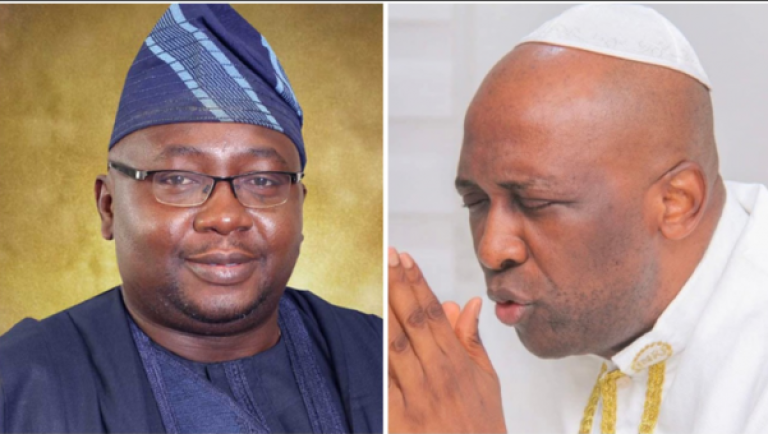
The World Bank has warned that Nigeria’s debt service cost to revenue ratio could hit 160 per cent in five years, except broad-based reforms are implemented to ‘unfreeze’ the fiscal space.
In a separate report, the global bank also said poorest countries that are eligible to borrow from the International Development Association (IDA) now spend over a 10th of their export revenues to service their long-term public and publicly guaranteed external debts – the highest proportion since 2000.
The report comes amid battles by the Ghanaian government to wean its economy from the risk of debt default and regain economic stability. A statement issued by Ghana’s Finance Minister, Ken Ofori-Atta, on Sunday, said existing domestic bonds would be exchanged for a set of four new bonds maturing between 2027 and 2037.
The West African country is counting on the support of the International Monetary Fund (IMF) to avoid major distress even as it risks further downgrading in the face of social unrest over an unbearable standard of living crisis.
Ghana is one of several African countries, including Nigeria, fighting to prevent a debt crisis. The Nigerian government, from January to April, spent 119 per cent of its retained earnings on debt servicing. This is seen as a sign that the country is approaching a fiscal cliff, as it is the first time the country’s debt-to-revenue ratio would hit or exceed 100 per cent.
In a veiled request months ago, President Muhammadu Buhari sought for debt relief or outright cancellation at a United Nations General Assembly (UNGA) in the United States.
The Minister of Finance, Budget and National Planning, Zainab Ahmed, following up at the recent World Bank/International Monetary Meeting (IMF) meetings, said the country was considering a request for debt restructuring, though this was later retracted.
The Guardian had reported that the Federal Government’s debt obligation stood at N35.7 trillion as of June. The amount does not include the Central Bank’s lingering overdrafts estimated at N20 trillion.
Besides, government’s ‘contingent liabilities’ to different institutions and projects stood at N4.6 trillion at the close of last year. The figure is projected to reach N4.98 trillion at the end of the year and jump by as much as 50 per cent to N7.52 trillion next year when the current administration will leave office.
At a roundtable with editors in Lagos, yesterday, Country Director, Shubham Chaudhuri, said the percentage of government’s revenue going into debt service cost would continue to trend upward in the next five years and balloon to 160 per cent in 2027.
The ratio spiked post-COVID-19, hitting 76 per cent last year. There have been concerns, but government explains its debt accumulation has been modest, except that revenues have failed to grow to match spending needs. The World Bank executives have aligned with government’s position and argued that “more and better spending” is required to stimulate growth.
Chaudhuri, in his presentation to editors, also projected the interest payment to revenue to rise steadily to over 80 per cent in 2027. He, however, said the country has a rare opportunity to break decisively from the recent past and change the trajectory.
Otherwise, he said, a business-as-usual culture would sustain the current stagnation amid the possibility of “things falling apart” – a situation that would send the economy spiraling to the bottom.
As is consistent with World Bank, Chaudhuri identified petroleum subsidy removal and market-reflective foreign exchange adjustment as some of the low-hanging fruits government could explore to free the choked fiscal space and give it sufficient headroom to begin to address the historical challenges.
The country director accepted there would be short-term shocks but warned that reforms are better carried out now than never and that the long-term repercussions of continual delays will be extremely painful.
From February 2020 till October 2022, he disclosed, the World Bank had approved a total of $9.2 billion for Nigeria, the largest any country ever got within such a short period.
So far, according to him, the Bank’s total disbursement to Nigeria stands at N4.56 billion, while the undisbursed balance is N9.2 billion. Its total commitment to the country is $13.99 billion, funding that spreads across 30 projects in the country. About 70 per cent of the projects are being implemented at the states.
The World Bank Nigeria Lead Country Economist, Alex Sienaert, described the current elevated inflation as one of the most challenging issues facing the country, adding that it is worse the inflation is “board base and structural” and not just about volatile items like food and energy.
He raised the concern that the inflation rate, which rose to 21.09 per cent in October, could push five million more people into poverty. Sienaert argued that the public debt stock was relatively low, but raised concerns about the poor revenue profile of government.
With public spending to the gross domestic ratio (GDP) currently at 12 per cent as against 30 per cent global average, the economist declared that the Federal Government needs to spend more and better. He charged the country to spend better, increase revenue and strengthen institutions to position the economy for faster growth.
The report released by the global bank yesterday highlights rising debt-related risks for all developing economies – low and middle-income economies. At the end of 2021, the external debt of the economies, it states, totalled $9 trillion, more than double the amount a decade ago. During the same period, the total external debt of IDA countries nearly tripled to $1 trillion, it adds.
Rising interest rates and slowing global growth risk, tipping a large number of countries into debt crises, as about 60 per cent of the poorest countries are already at high risk of debt distress, if not in distress.
At the end of 2021, IDA-eligible countries’ debt-service payments on long-term public and publicly guaranteed external debt totaled $46.2 billion – equivalent to 10.3 per cent of their exports of goods and services and 1.8 per cent of their gross national income (GNI), according to the report.
The percentages were up significantly from 2010, when they stood at 3.2 per cent and 0.7 per cent, respectively. In 2022, IDA countries’ debt-service payments on their public and publicly guaranteed debt are projected to rise by 35 per cent to more than $62 billion, one of the highest yearly increases of the past two decades.
China is expected to account for 66 per cent of the debt-service payments to be made by IDA countries on their official bilateral debt.
“The debt crisis facing developing countries has intensified,” said World Bank Group President, David Malpass, adding “a comprehensive approach is needed to reduce debt, increase transparency, and facilitate swifter restructuring – so countries can focus on spending that supports growth and reduces poverty. Without it, many countries and their governments face a fiscal crisis and political instability, with millions of people falling into poverty.”
In nominal terms, debt indicators seem to have improved in 2021, the report shows. As economic growth resumed following the global recession in 2020, public and publicly guaranteed external debt as a share of GNI returned to pre-pandemic proportions.
However, this was not the case for IDA countries, where the debt- to-GNI ratio remained above the pre-pandemic level at 25 per cent in the face of a bleak and deteriorating economic outlook.
(Guardian)





